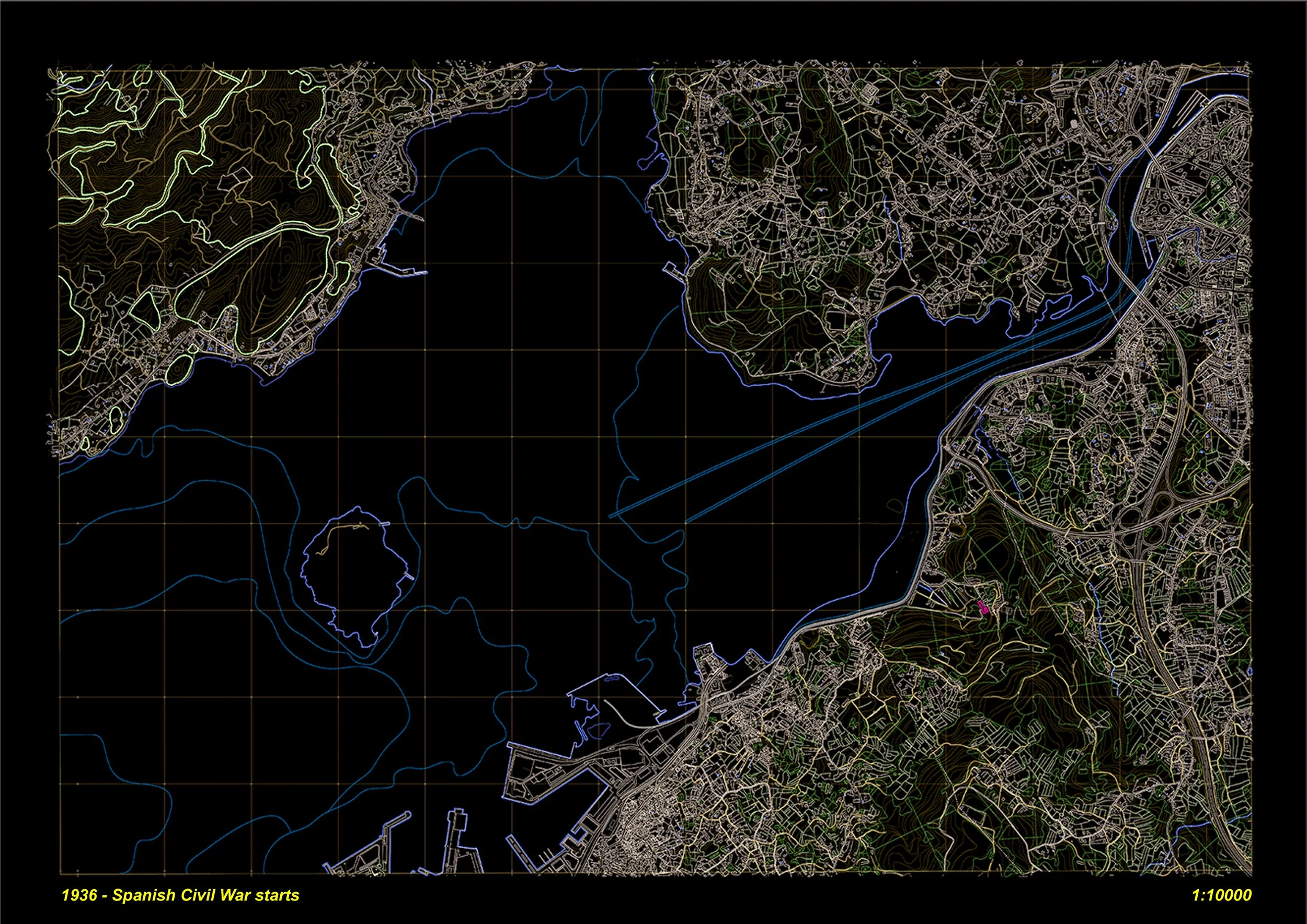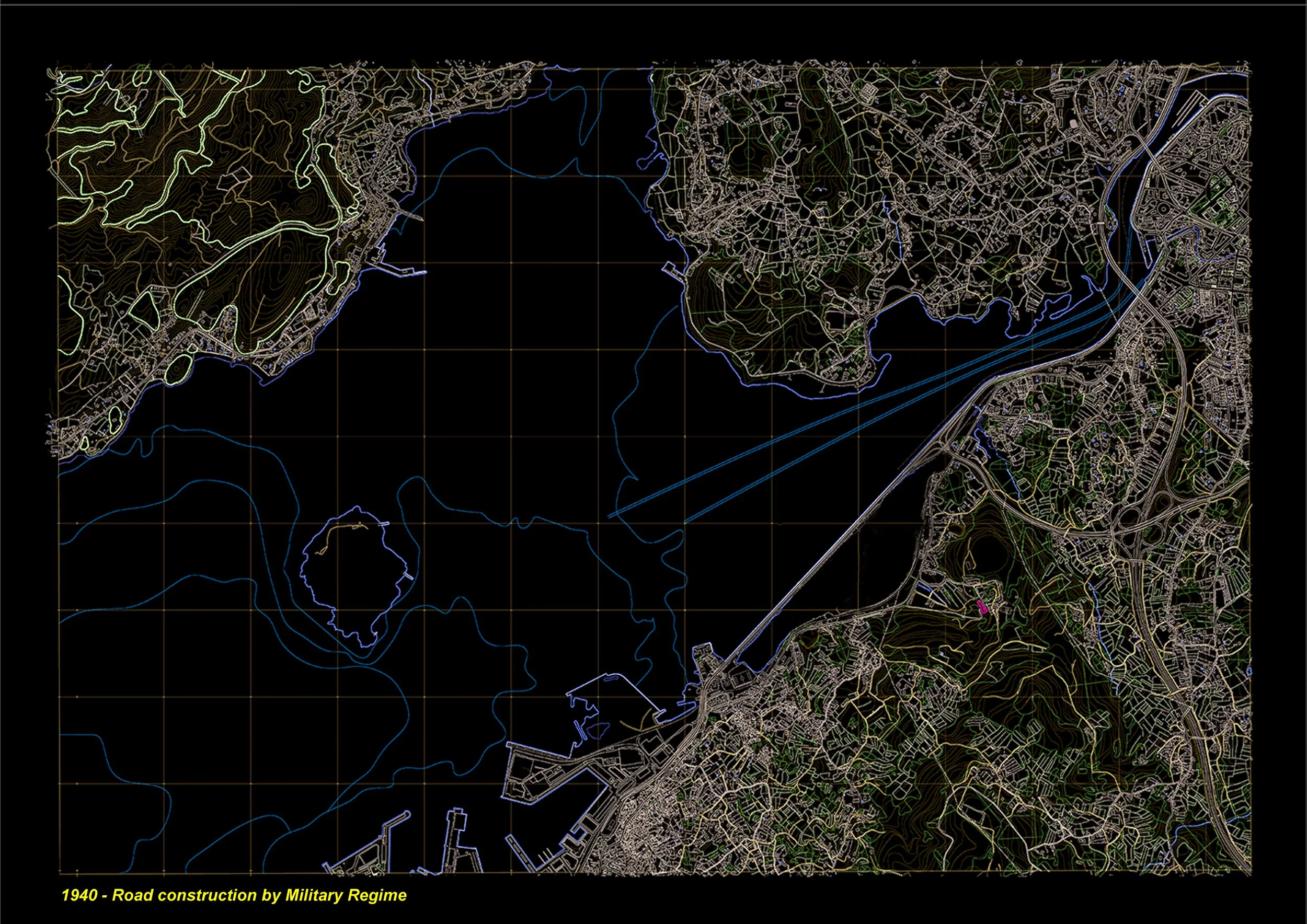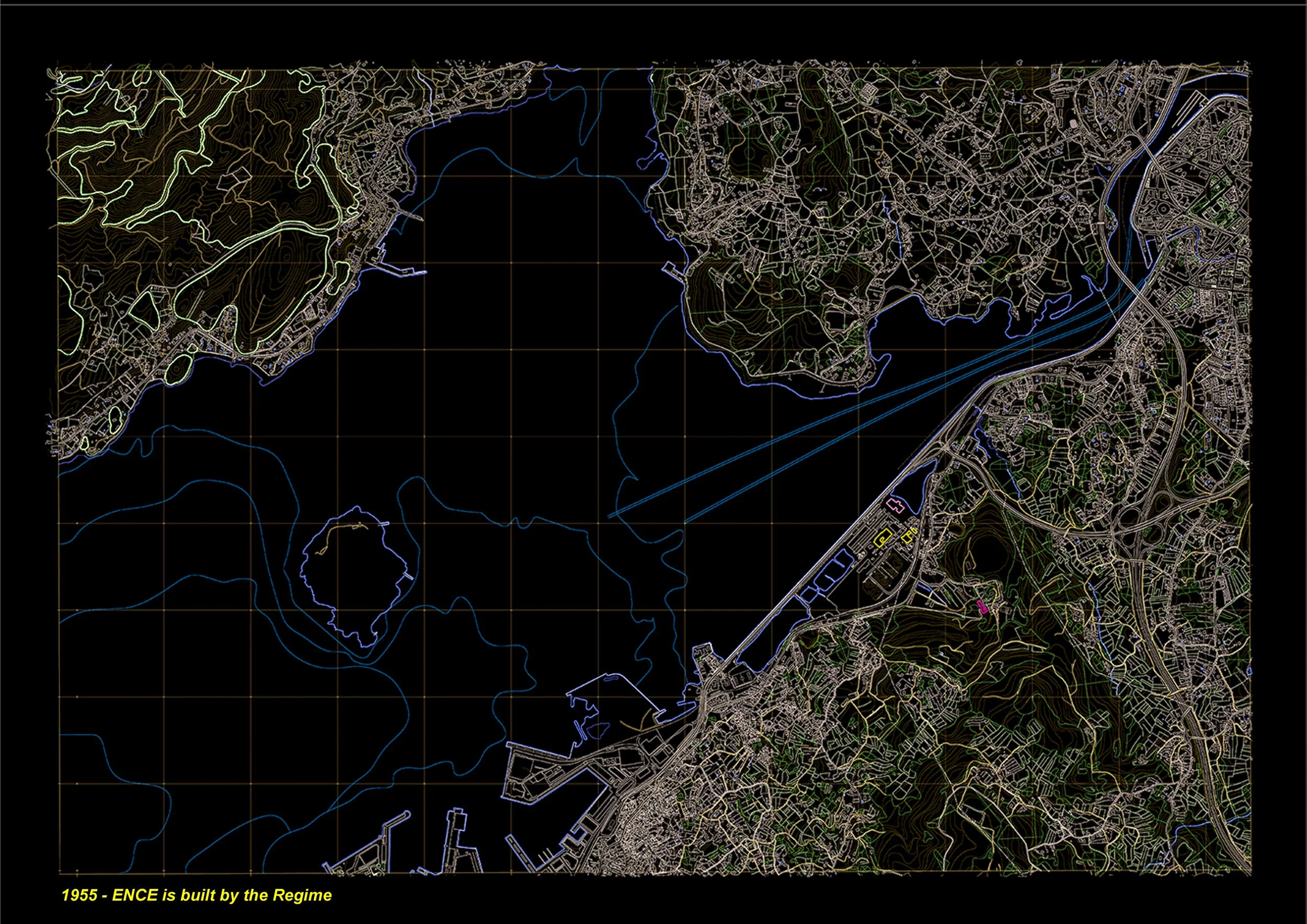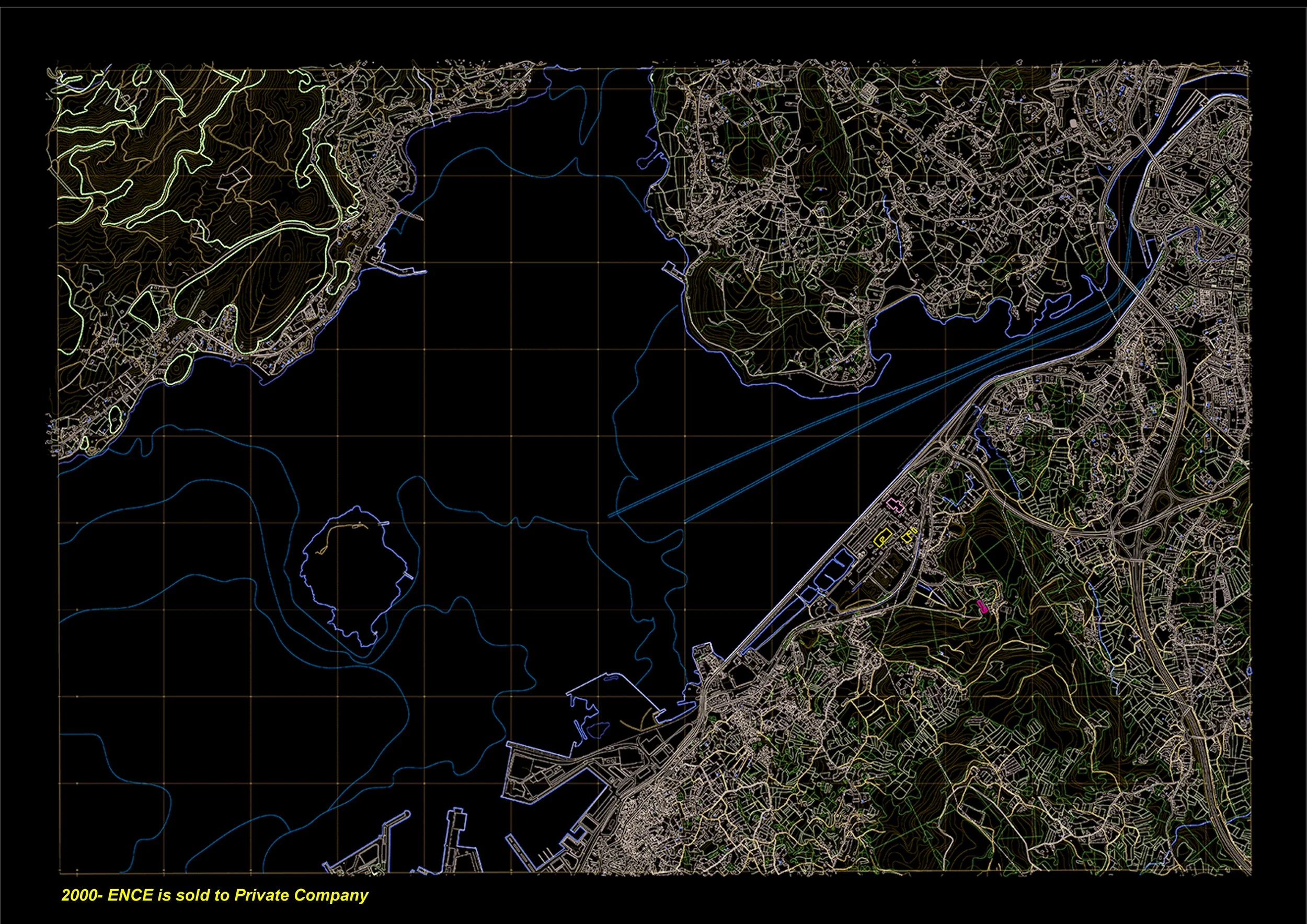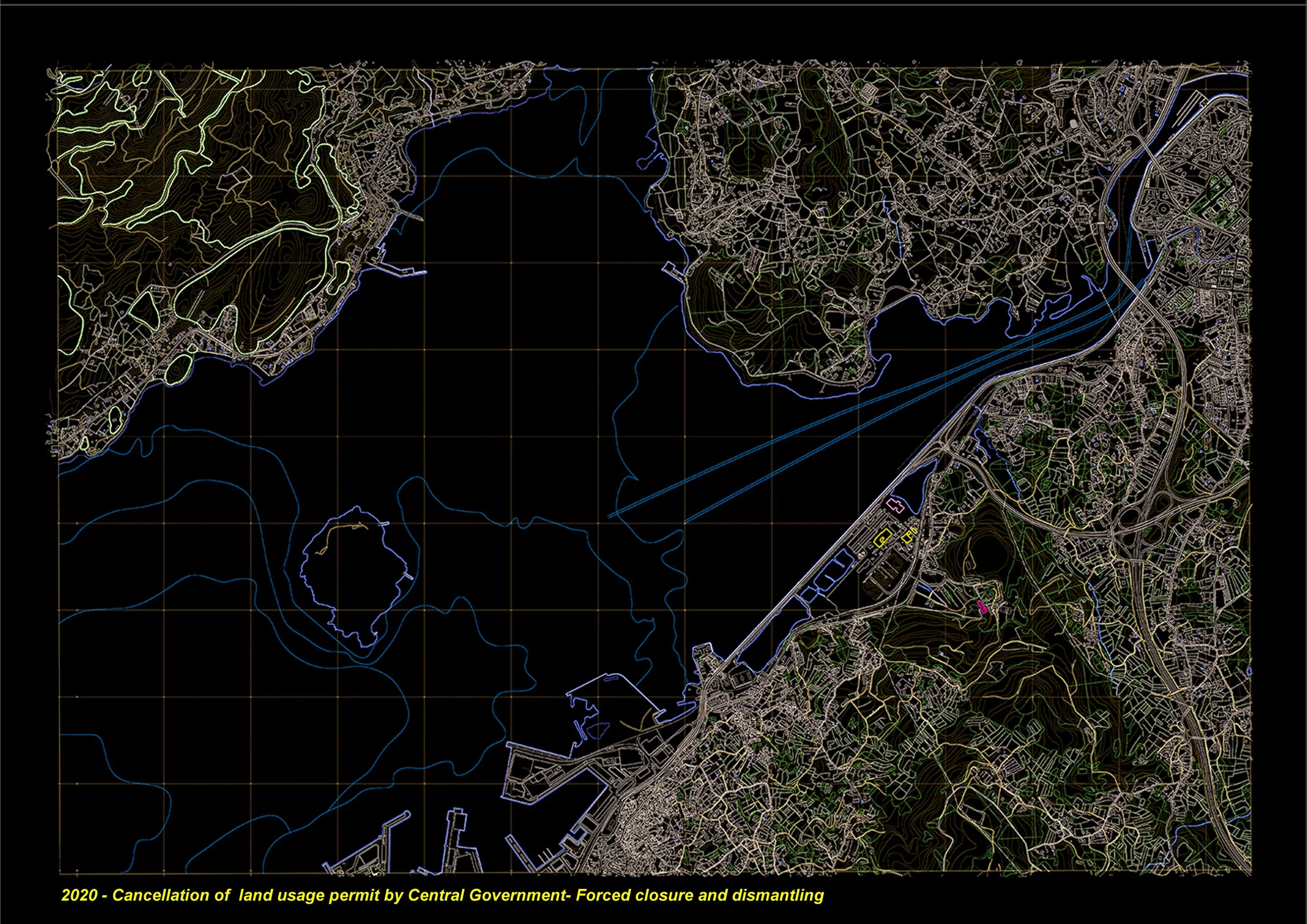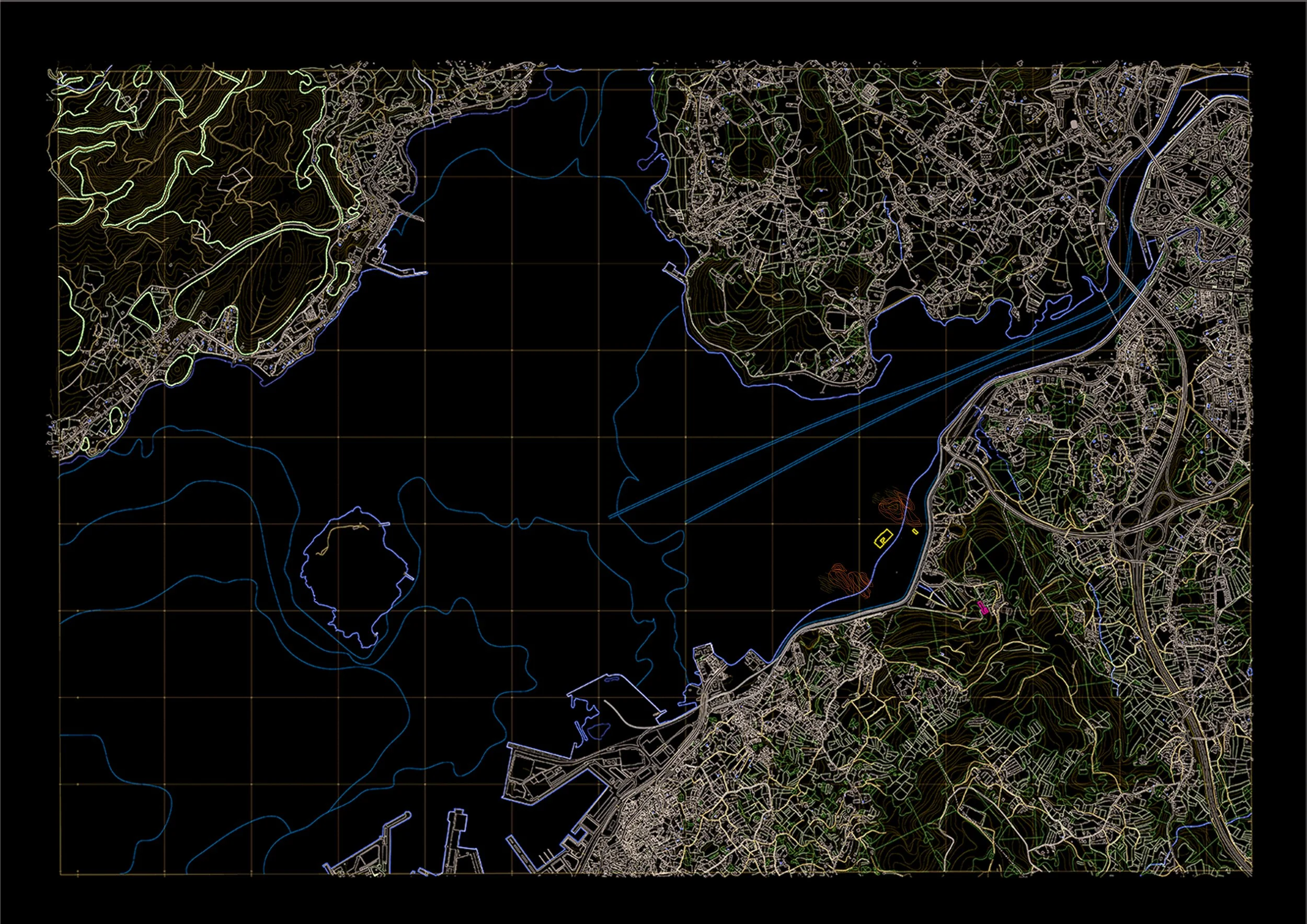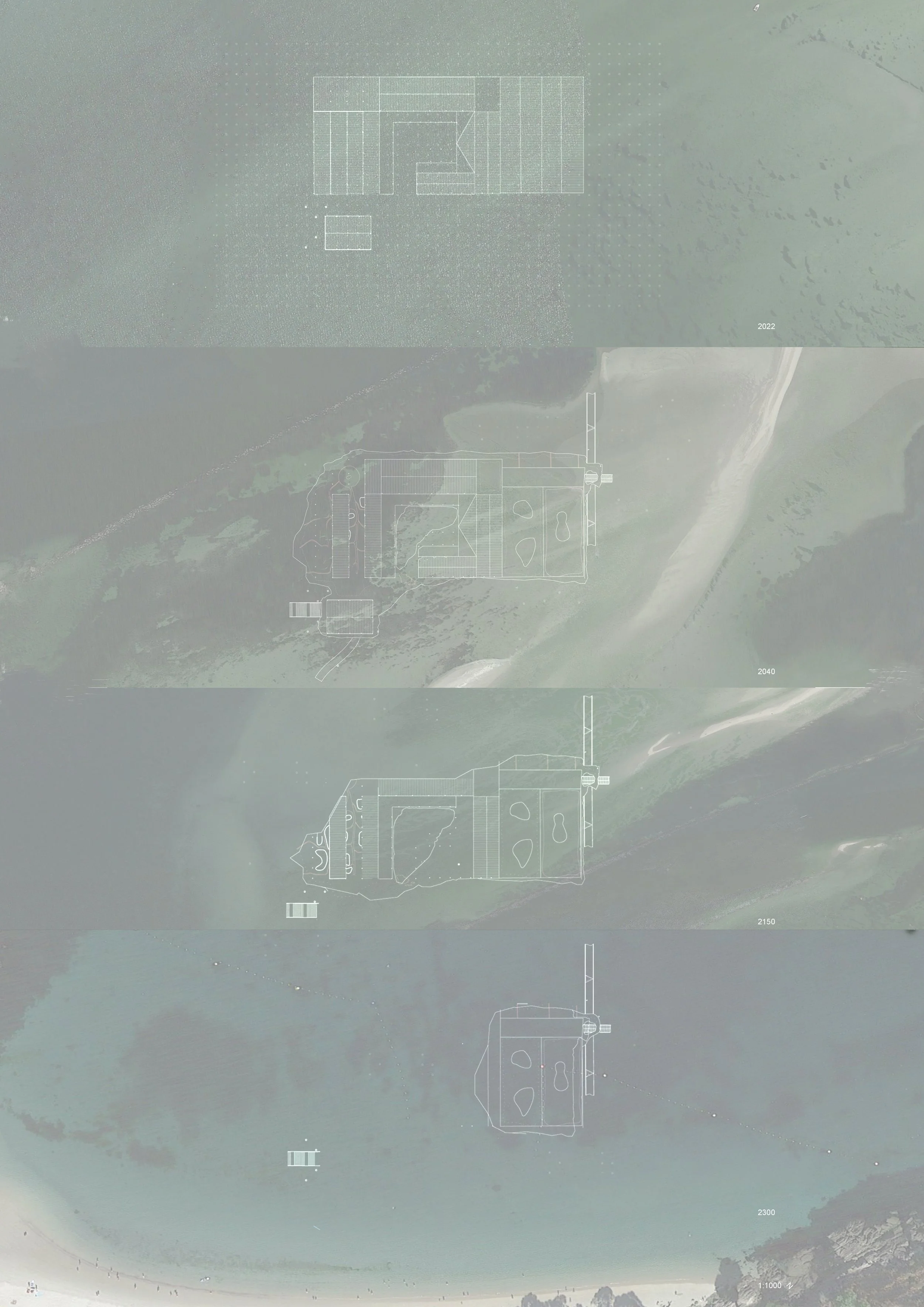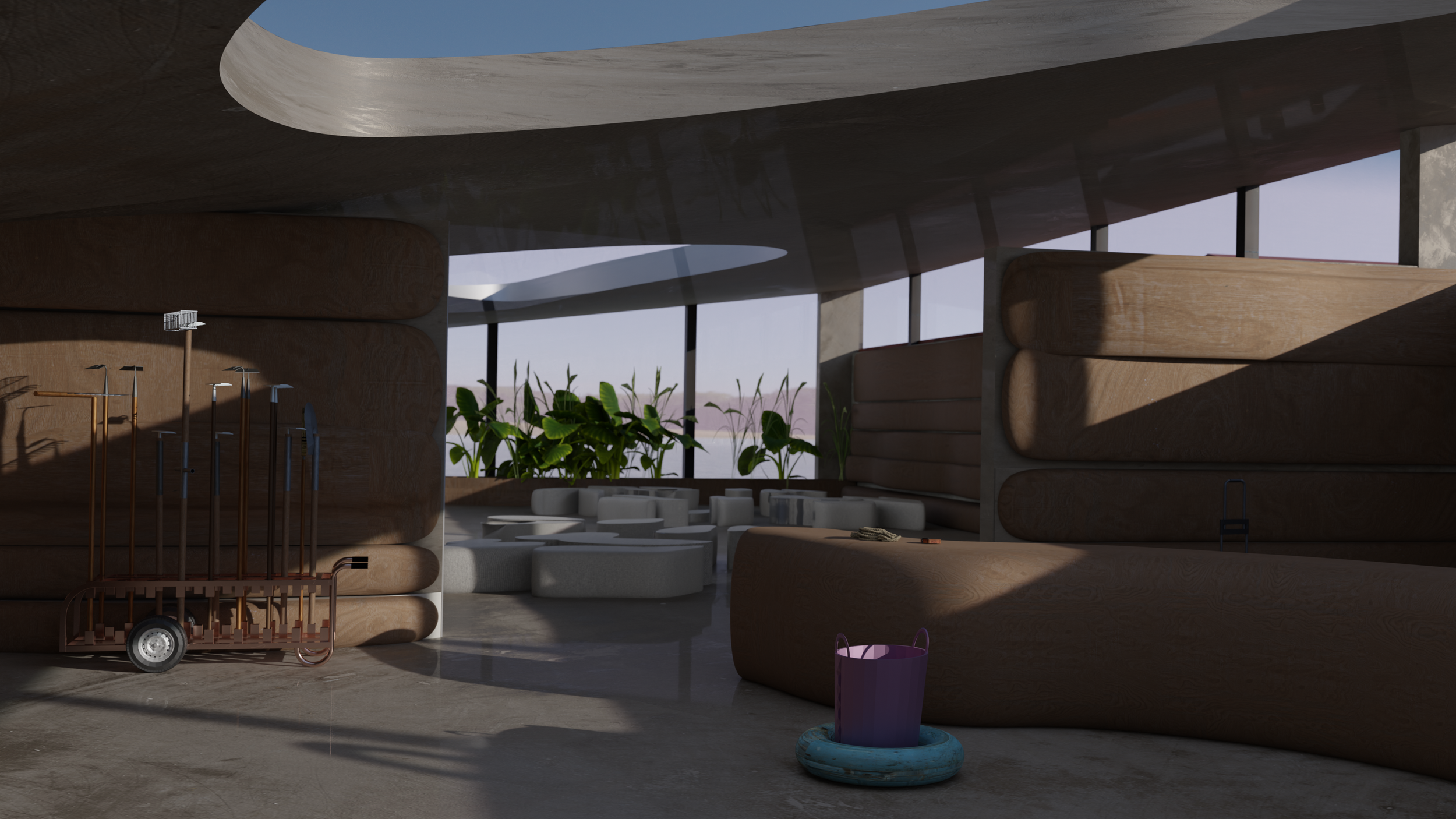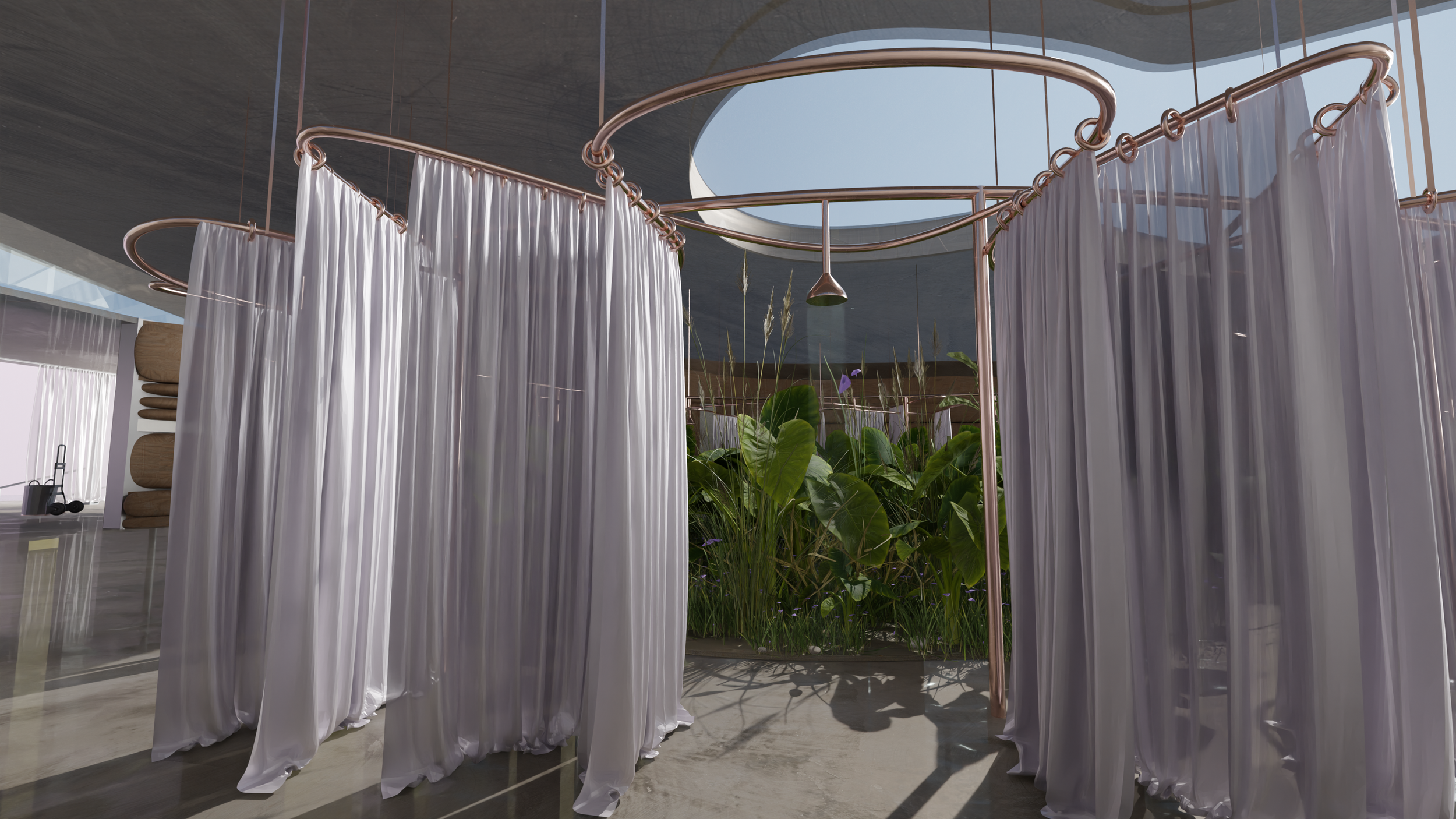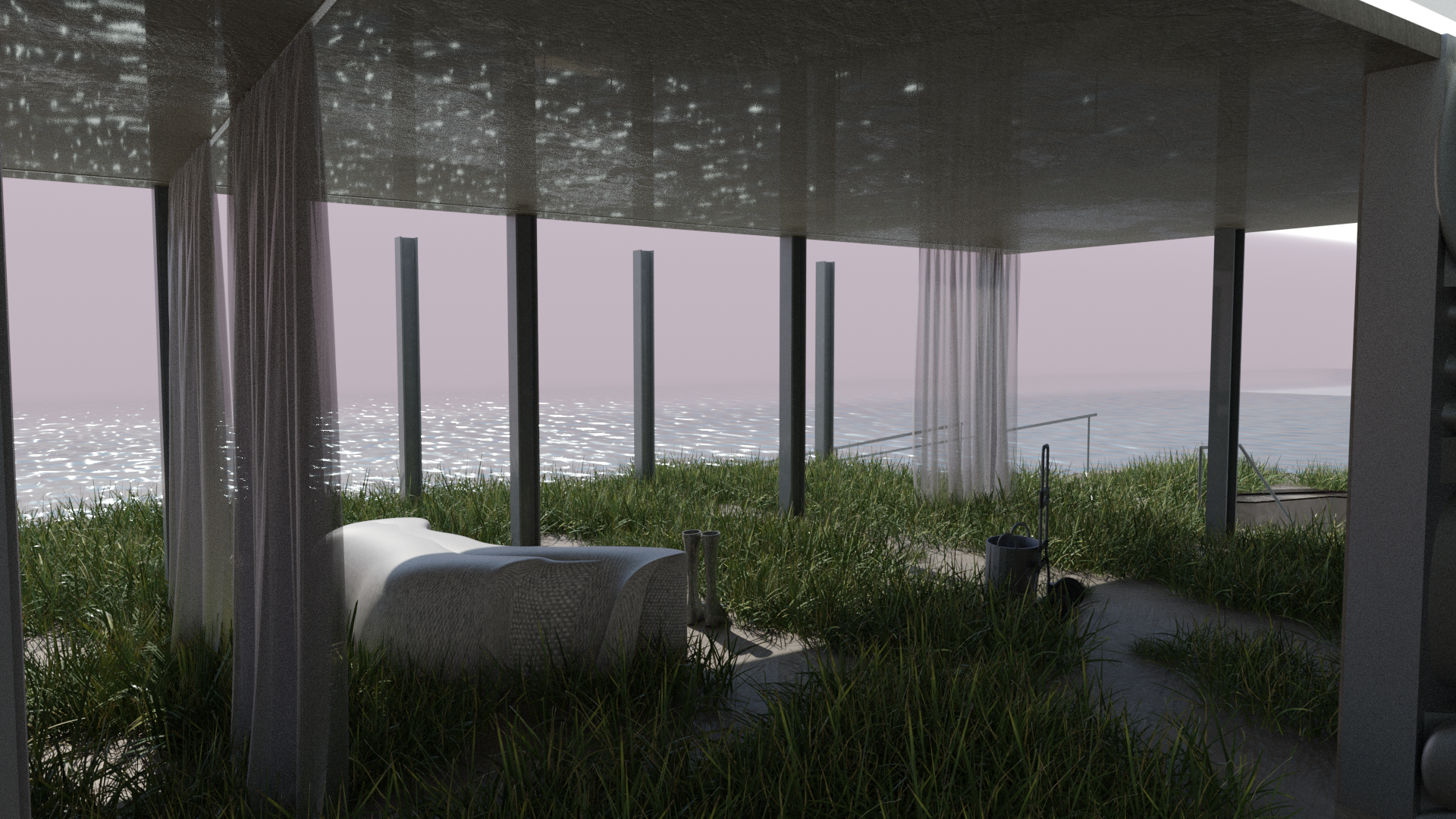Alborada: A Post-Industrial Galician Landscape
Alborada investigates the surviving ecologies of a wetland occupied by the paper industry and proposes a post-industrial afterlife for a decaying intertidal relic.
The proposals Alborada and Green Desert investigate in depth the problems around eucalyptus plantations in Galicia. How did they arrive and why are they still in the land, how much surface do they occupy and why do they have such a terrible impact on the ecosystem. Trough this research, abuses to the local community and the landscape throughout Franco’s regime and the democracy are exposed.
The project was born in 2021 when the Spanish Government questions the extension of the permit to operate granted to ENCE, paper paste factory in the Ria of Pontevedra. Taking for granted that it would be cancelled in 2023, the intervention imagines an alternative furture for the estuary, while offering reparations and criticises the environmental policies inflicted on the landscape
Institution
Royal College of Art, London, UK
Year
2021-2022
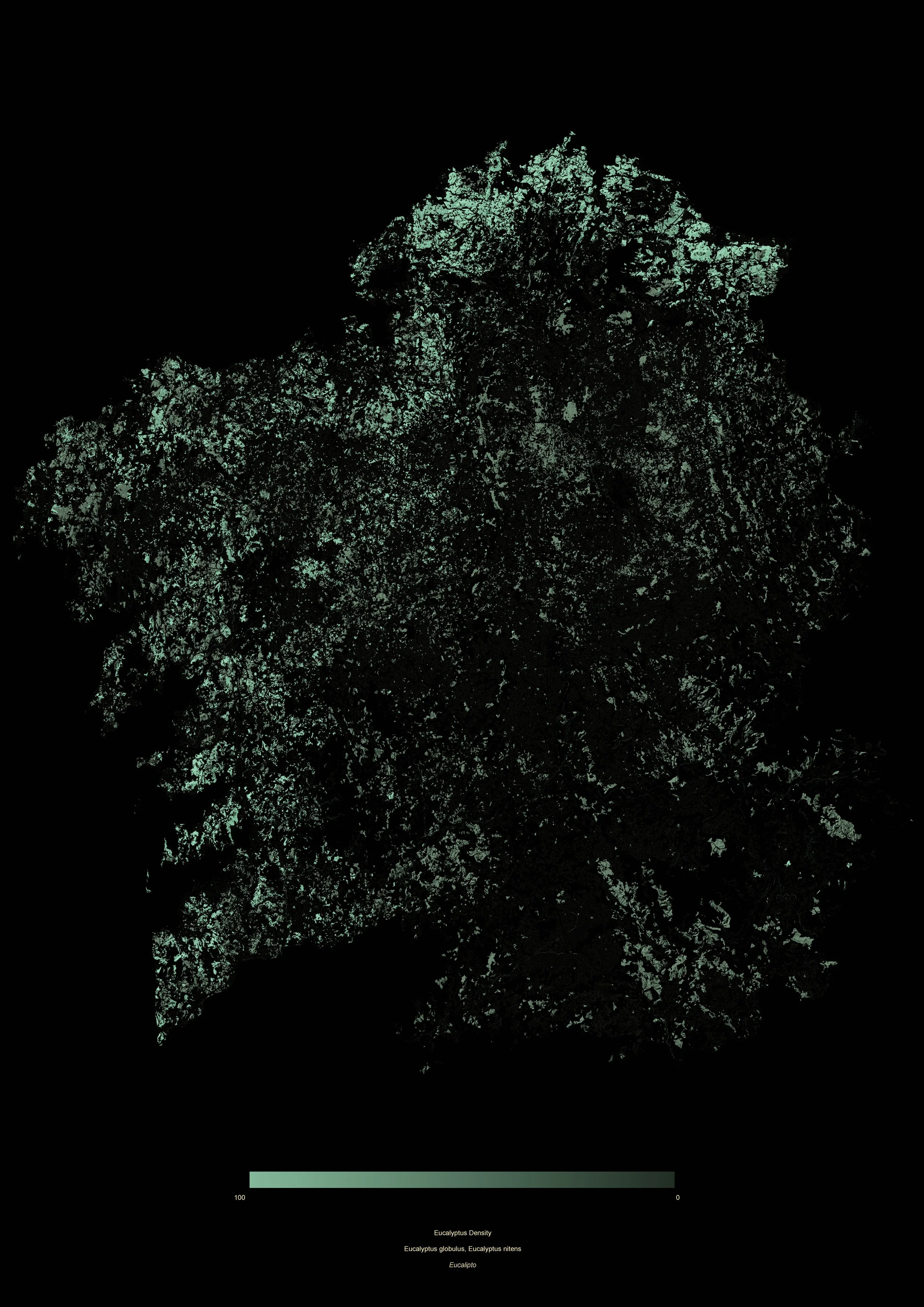


Eucalyptus Density - Eucalyptus globulus, Eucalyptus nitens - #Eucalipto - Gradiant Scale: 100 — 0

Autochthonous Species Density - Quercus Robur, Castanea Sativa, Quercus Suber, Taxus, Fagus Sylvatica, Alnus Glutinosa, Salix Babylonica, Betula Pubescens, Fraxinus Excelsior, Pinus Pinaster - Carballo, Souto, Sobredo, Teixo, Faia, Amieiro, Salgueiro, Bidueiro, Freixo, Piñeiro, Plumacho - Gradiant Scale: 100 — 0
Context and demand
Galicia produces 4 million tonnes of Eucalyptus wood yearly, 2 million are for exclusive supply of ENCE, paper paste factory translates in the occupation of. 500.000 hectares out of 2.9 million hectares of the total surface of the region are covered by Eucalyptus.
Eucalyptus trees were first brought to Galicia by a catholic missionary from Australia. The purpose of incorporating the species was to dry up wetlands to avoid plagues and bacteria. The current consequences . The region is the most humid in the Iberian Peninsula, although it has hosted 40% of the “wild”-fires in the last 20 years.
Some characteristics presented by Eucalyptus plantations are; that they are mainly monocrops - very few species co-exist with them as they can have roots as deep as 60 metres underground which have enough strength to break rock and concrete in order to find water sources. When autochthonous species start a water competition with Eucalyptuses, they are bound to lose.
Eucalyptus need very little maintenance and their leaves are toxic to most of the animal species, only Koalas have evolved to digest them. The reason behind their toxicity is that they can reach layers underground that are mainly composed of mineral rocks, therefore metabolising these up to their leaves.
Their average height is 40-60 metres and the flexibility of its trunk allows them to bend with the wind very easily and as a consequence they are pyrophytic, they spread fire very fast therefore became a risk to surrounding populations
Before the Civil War, Spain was a Republic and Galicia had an Autonomy Statute. During the dictatorship, Galician culture was extremely censored and oppressed, to a point in which anyone willing to defend the idea of a nation will be executed or exiled.
One of the strategies of the regime for censorship and control over Galician land was the implementation of a cellulose factory in the Estuary of Pontevedra.
The main supply for the factory is wood. Fast and cheap. Eucalyptus trees, previously used for hygienic social security and traditional medicine remedies, are now turned into a weapon to erase the native forest, its symbols, and links to the Celtic history and the people living in it.
ENCE was founded in 1965 by a dictatorial regime on top of public land, an estuarine tidal wetland serving a community of more than 15000 fisherwomen.
Ever since, it has been operating illegally, polluting the estuary and destroying the native forest. Through direct liquid spills onto the river and constant fumes the marine biodiversity and birdlife have decreased by 80%. Some of the leaked chemicals include sulfur dioxide, nitrogen sulfide, and nitrogen oxide after the cease of the use of mercury in the 2000s. After the end of the Dictatorship, democratic governments have kept supporting the existence of the 2 km long machine.
Due to continuous violation of environmental law, the concession for the use of the land has been recently denied and is expected to cease operations within 3 years.
This led me to explore the regeneration of the wetland and the forest. Recovering the ecosystem of the estuary through the implantation of a centre for the fisherwoen and the estuary made out of the remains of the industrial infrastructure.



The dismantling catalogue
A Catalogue of most of the items of machinery , materials and constructions inside of the factory was produced in order to designed a dismantling response that would allow recycling and repurposing in the proposal.
Deciding which infrastructure would have the lowest environmental impact when removed and which ones would be worth keeping for a new programme.
All this elements were modelled from aerial photos and videos that were lent to me, by ecologist involved in the catastrophe, as it is forbidden to access the factory. The 3d images were built between Rhino and Blender and the catalogue was produced in InDesign as a magazine.

